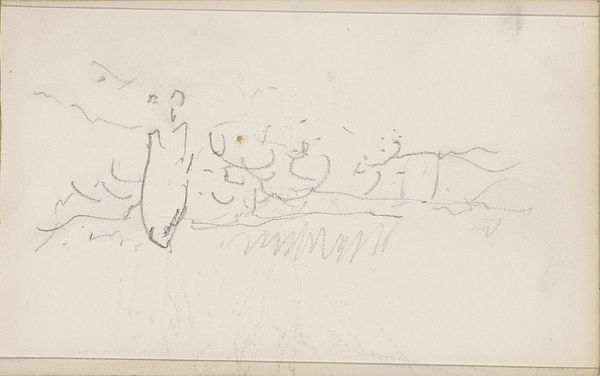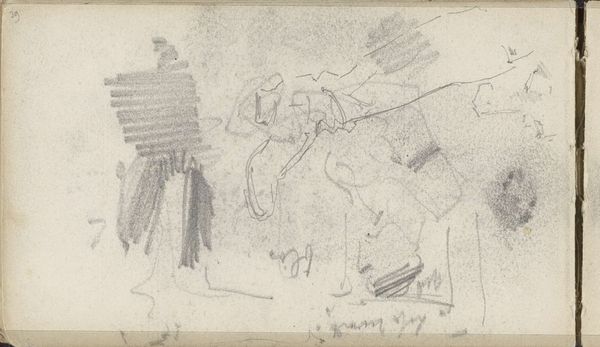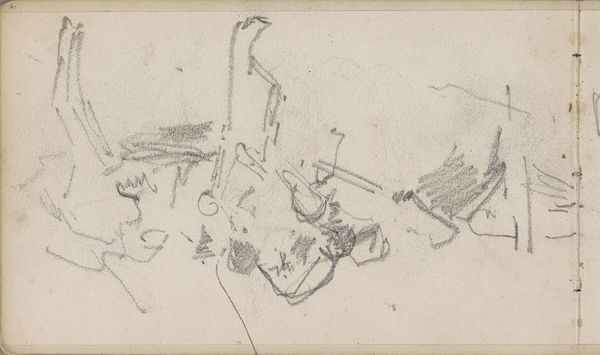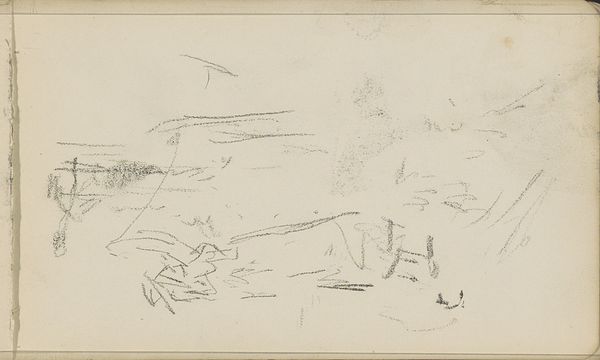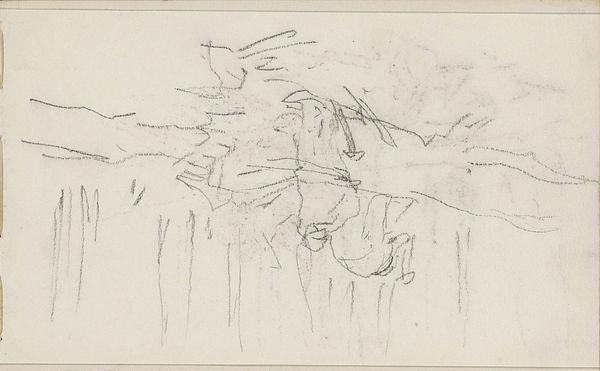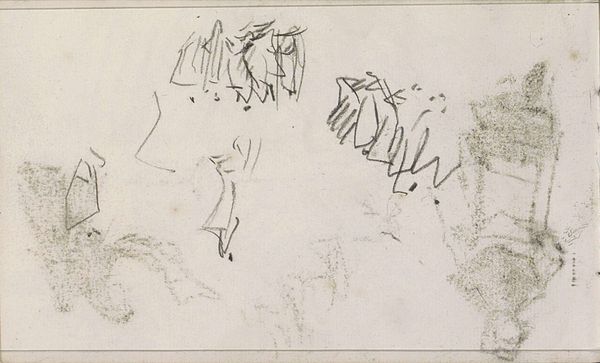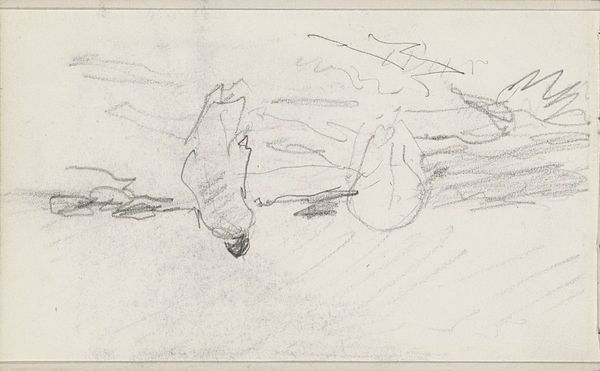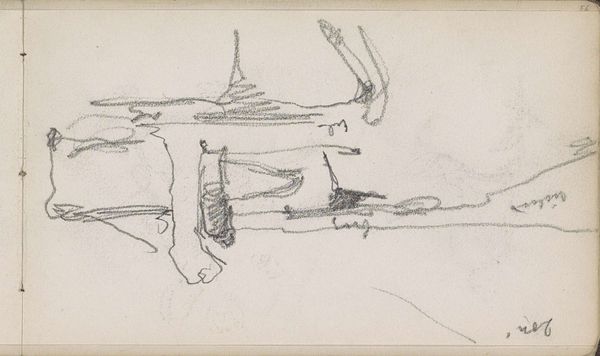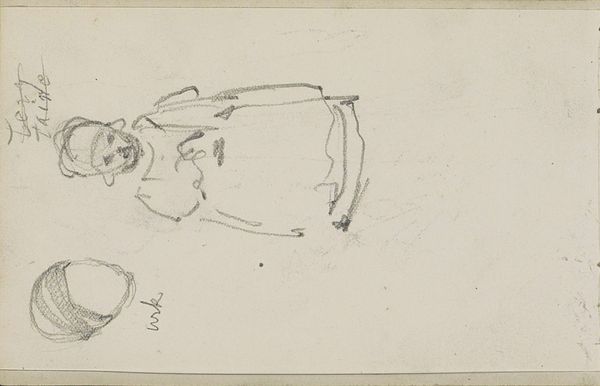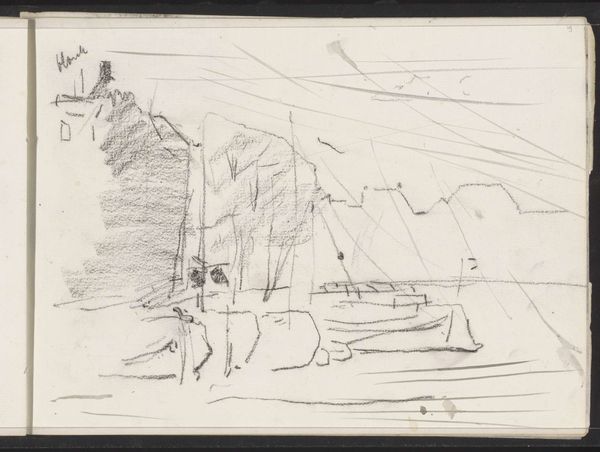
drawing, charcoal
#
drawing
#
impressionism
#
landscape
#
figuration
#
horse
#
charcoal
#
realism
Copyright: Rijks Museum: Open Domain
Curator: Here we have "Figure with a Draught Horse," a charcoal drawing created by Anton Mauve, likely sometime between 1848 and 1888. Editor: It has a beautiful rawness, doesn't it? Almost like a fleeting impression captured from life. The charcoal strokes are so light, just hinting at form, there is very little depth. A quick sketch full of light and atmosphere. Curator: Precisely, its very suggestive! Think about the visual language of draught horses in 19th century art, often symbols of labor and the rural working class. What is being conveyed when that image is presented so transiently, incomplete and lacking specificity? Editor: I see that the absence of details, ironically, makes it a more potent comment. By stripping away the picturesque, Mauve seems to highlight the grueling and unglamorous aspects of agricultural labor. There's a quiet dignity, even vulnerability, in that roughly sketched figure beside the powerful horse. It is reminiscent of Millet’s paintings, or even Courbet, but this rendering is even more stark, even less interested in romanticizing that rural labor. Curator: I would also note, charcoal as a medium itself carries symbolic weight; here its ephemerality reflects the lives of these figures, etched onto the page as briefly as they toil within a society undergoing dramatic industrial transformations. It lacks the detail found in much salon artwork of that time. It really strips the scene to the most basic element. Editor: I'm compelled by the composition—the horizon line, if you can call it that, feels incredibly low, pushing our viewpoint to this quiet intimacy with the worker and the animal. It’s like Mauve invites the viewer to bear witness. I suppose you could say this is pre-van Gogh, so there is something inherently moving to see him taking a deep interest in Mauve, who later mentored him. Curator: That mentor/mentee relation to van Gogh infuses it with even more context now. Given the era’s political volatility, how does an artwork like this operate as an intersection point— between emerging impressionistic style and a humanist sentiment towards common folk? Editor: That is the challenge: interpreting the intentionality when there’s an open quality to the execution. Whether Mauve aimed to portray political agency or a social condition, the simple gesture, in the end, creates a moving expression of burdened figures persevering. Curator: Beautifully put. It's easy to get lost in symbols and forget the humanity reflected within them. It makes me appreciate this humble work even more. Editor: I concur.
Comments
No comments
Be the first to comment and join the conversation on the ultimate creative platform.


